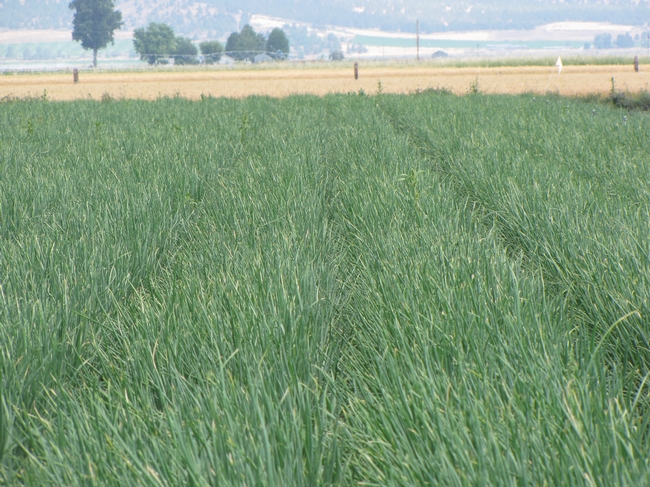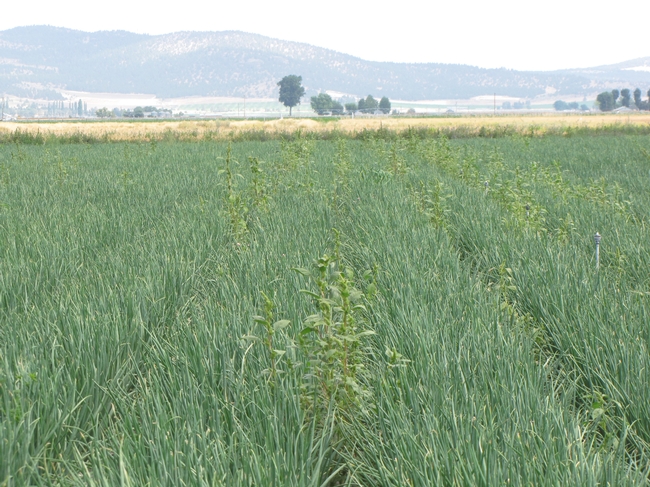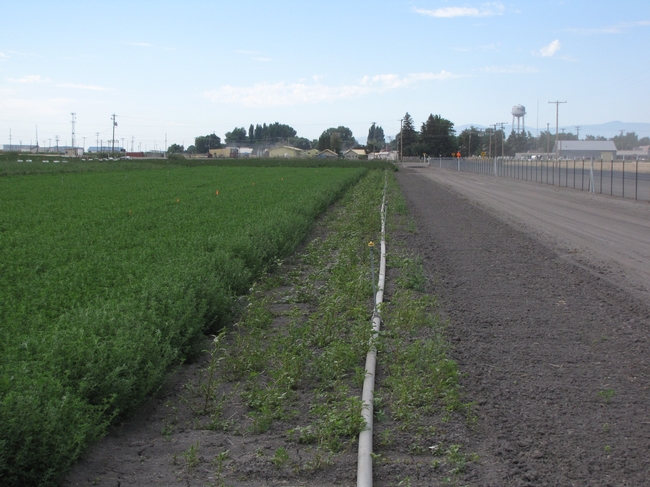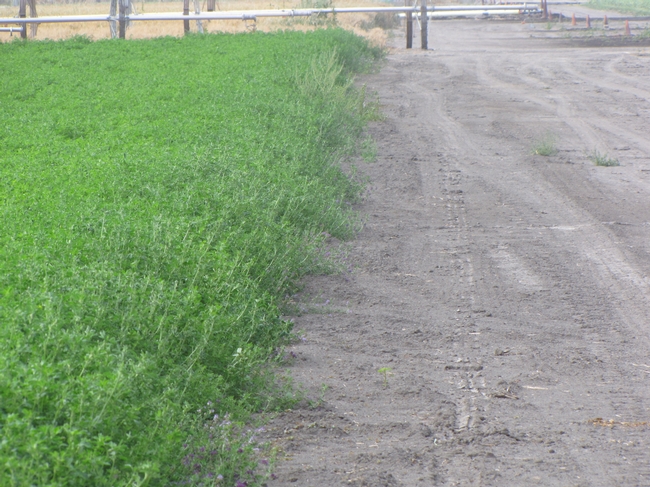Part of my job as the Director/Farm Advisor at the Intermountain Research and Extension Center involves overseeing weed management programs for a variety of crops and non-cropland at the Center. Over the last month, I’ve observed the outcome of these programs as many of the crops are nearing harvest. This spring I would have given myself an “A” grade for weed control. We treated crop fields with a combination of control methods and made an aggressive push to control weeds along roads, ditches, and field borders. Unfortunately, as time goes on I think I need to downgrade my performance to a “B” because some fields and roadsides now have quite a few weeds.
In reviewing field records, one factor was a common denominator at weedy sites this year. Weeds were primarily found in fields that did not receive an effective preemergence herbicide application. Three examples are onions, potatoes, and roadsides. Onion fields that have excellent weed control were treated with preemergence herbicides such as pendimethalin (Prowl H20) and ethofumesate (Nortron) in combination with postemergence herbicides such as bromoxynil (Buctril) and hand-weeding. Postemergence herbicides and hand-weeding were also used in the weedy onion fields, but preemergence products were left out for various reasons. Preemergence herbicides improved onion weed control by controlling late-emerging weeds such as pigweed that emerged shortly after hand-weeding. Preemergence herbicides also improved weed control by controlling or stunting early-germinating weeds so the weeds were the optimal size for postemergence control at the 2-leaf stage.
Hairy nightshade was a problem weed in potatoes this year. In fields that received the preemergence herbicides dimethenamid-P (Outlook) after hilling and rimsulfuron (Matrix) before row closure, hairy nightshade was controlled. In fields that only received rimsulfuron before row closure, hairy nightshade is a problem.
We primarily use tillage and hand-weeding for weed control along field borders and roadsides. We also treat all roadsides with glyphosate multiple times during the season. Short-term weed control from these methods is excellent; however, most of our roads are quickly re-infested with weeds. In contrast, a few roads were treated with preemergence herbicides in areas where the sprayer treating a crop field overlapped the road. These roads have very few weeds and only required a single glyphosate treatment.
In this post, I’d like to emphasize the importance of using preemergence herbicides in an integrated weed management program along with postemergence treatments. In today’s world with herbicide tolerant crops and a large list of selective postemergence herbicides, land managers often rely on postemergence herbicides alone. This practice can be effective in situations where a competitive crop is established, but in situations where there is still an open crop canopy with a lot of bare ground adding preemergence herbicides to the weed control program often provides superior weed control. Preemergence products are only effective when applied before weed emergence and only work on certain weeds, so choose products and application timing carefully.
Below is a partial list of the benefits of preemergence herbicides. I also encourage you check out the UC-IPM website http://www.ipm.ucdavis.edu/, UC ANR catalog http://anrcatalog.ucdavis.edu/, or even Google “UC” and “preemergence herbicides” to find a wealth of information on how to utilize preemergence herbicides effectively.
Benefits of Including Preemergence Herbicides in a Crop Weed Control Program
- Provide weed control during the first 30 to 60 days after planting before postemergence herbicides can be used
- Provide residual weed control of late emerging weeds after postemergence herbicide applications
- Provide an additional mode of action to control herbicide resistant weeds and avoid future weed resistance
Benefits of Premergence Herbicides for Weed Control in Noncropland, Ornamentals, and Wildlands
- Provide residual weed control reducing the labor and cost of re-applying postemergence herbicides
- Assist in revegetation of native and desirable plants by minimizing weed competition during plant establishment
- Can be used selectively to prevent annual weed establishment in perennial plantings
Attached Images:

Onions with Preemergence and Postemergence Herbicide Application

Onions with Postemergence Herbicide Application Only

Roadside without Preemergence Herbicide Application

Roadside with Preemergence Herbicide Application